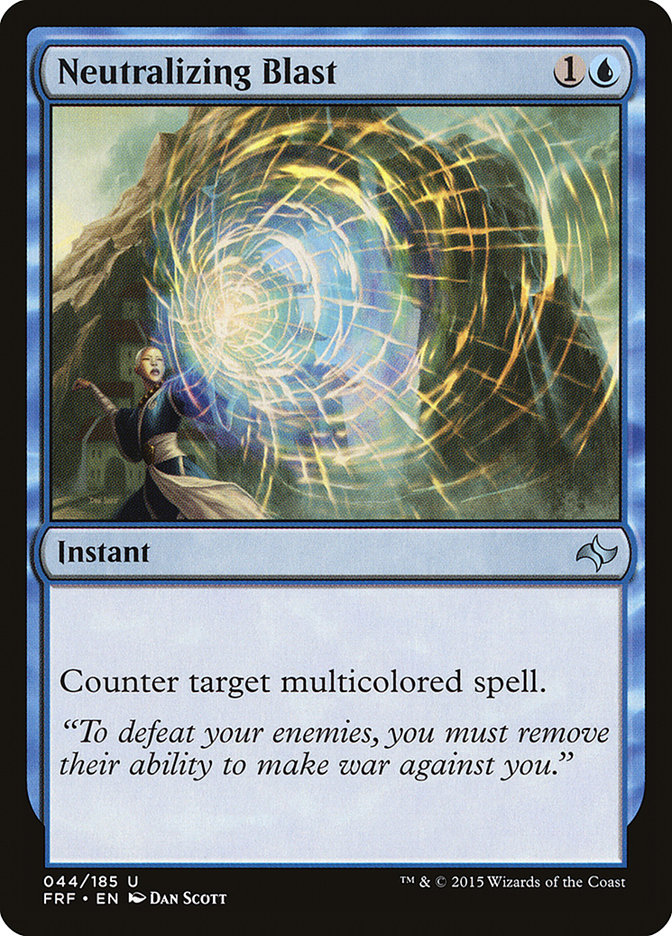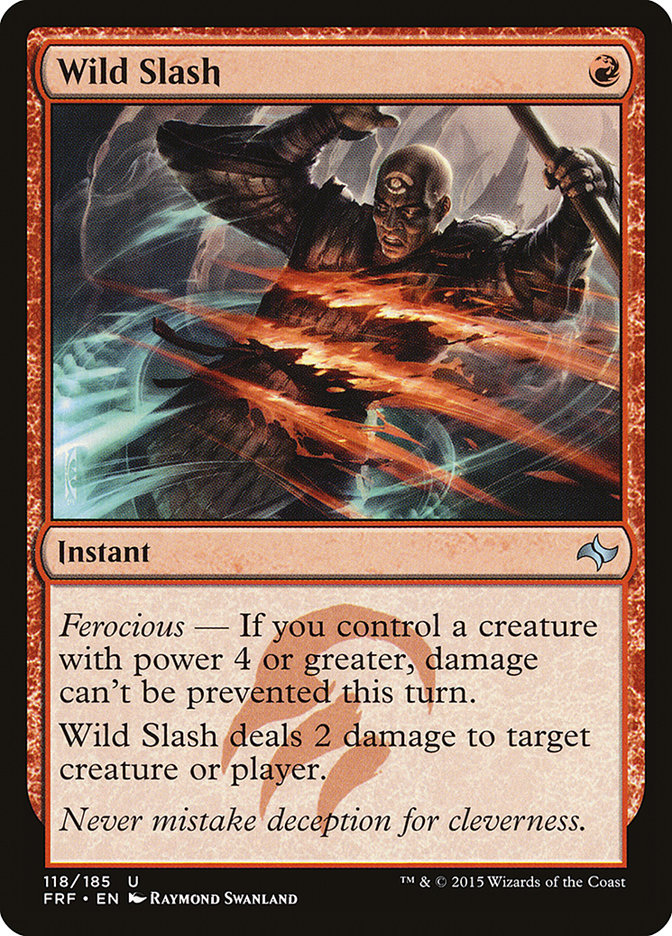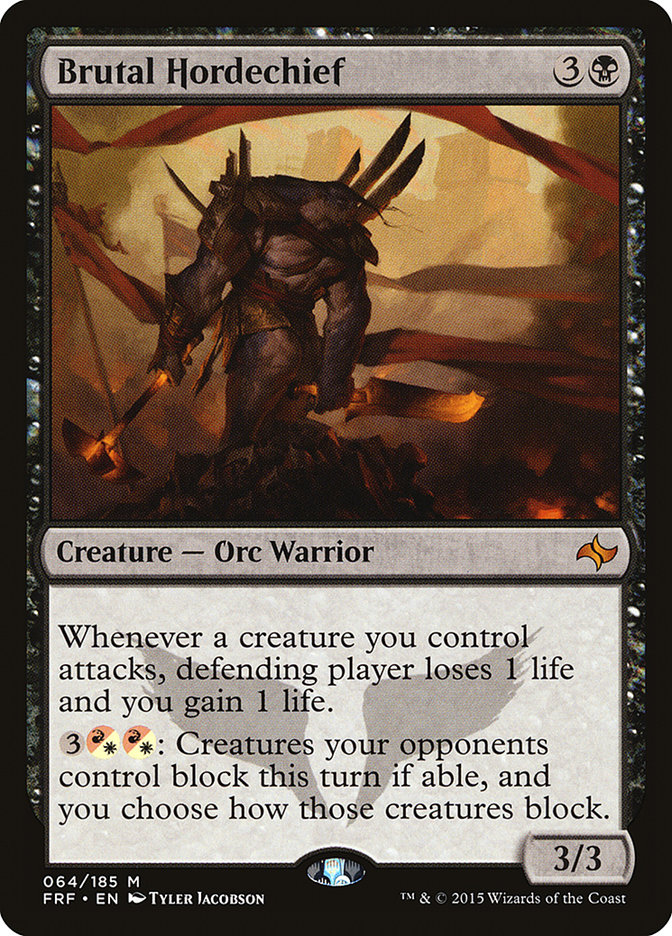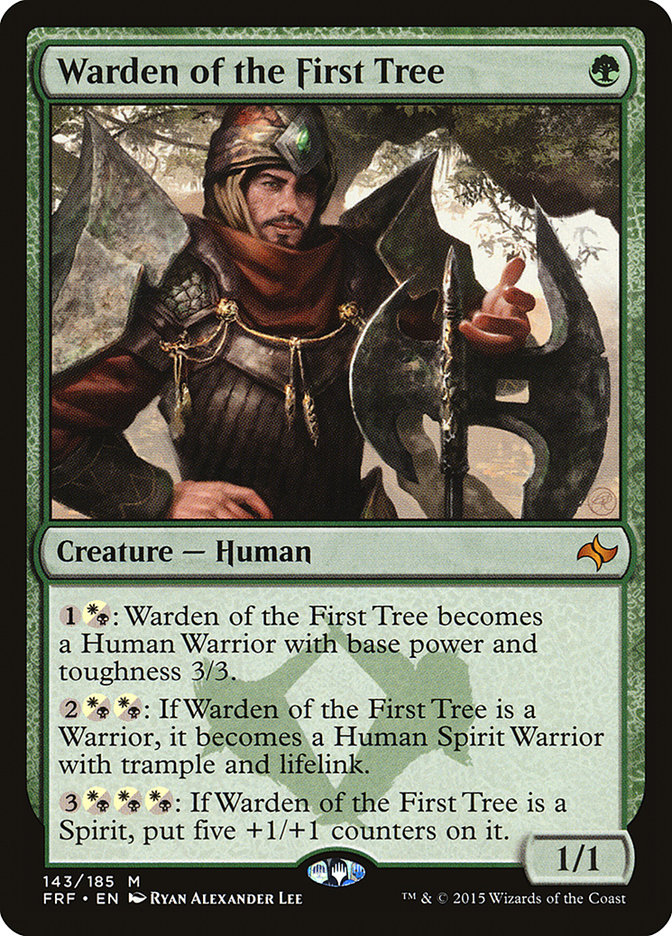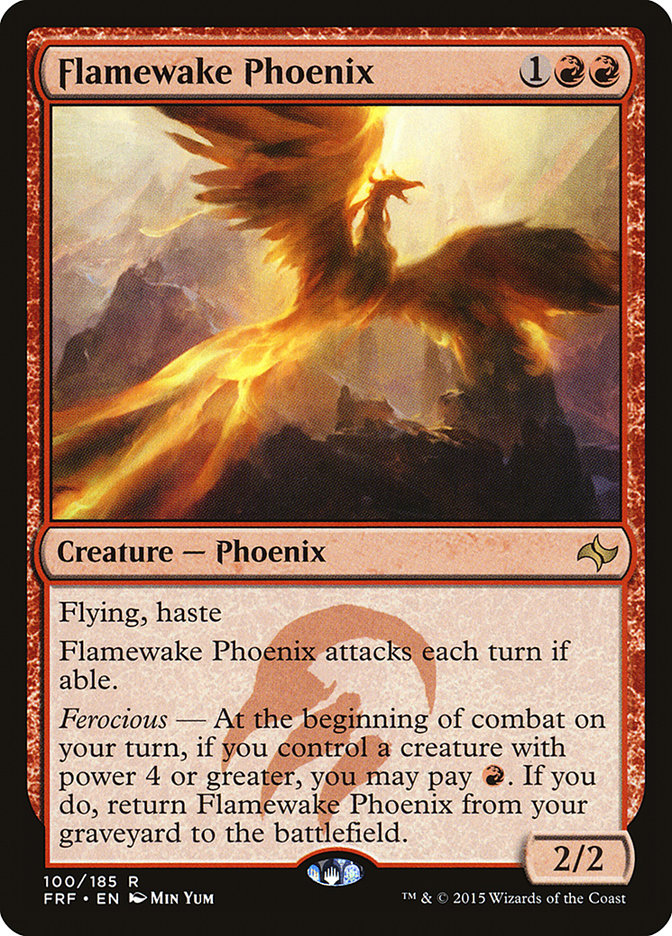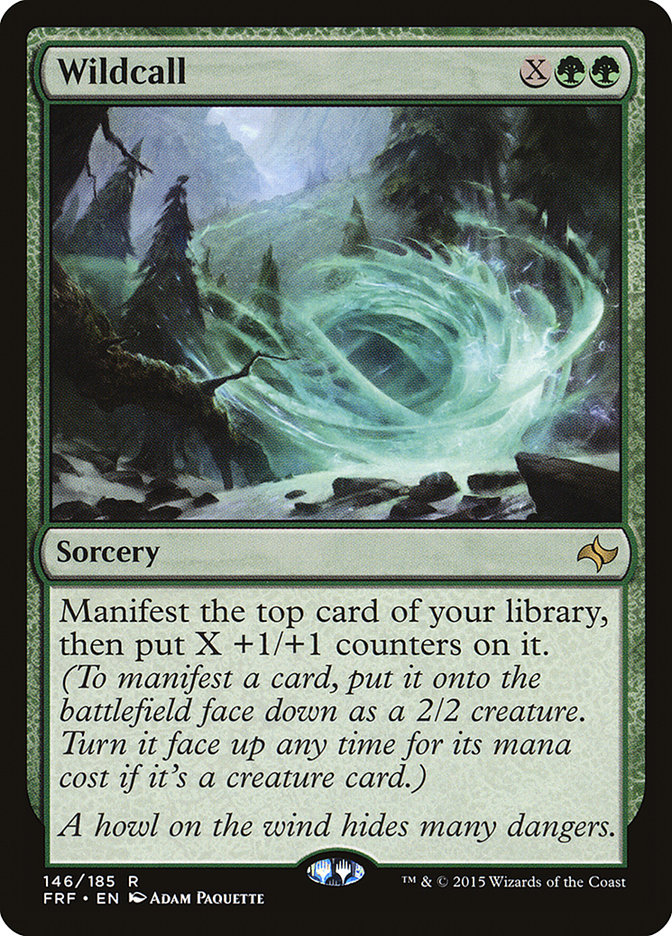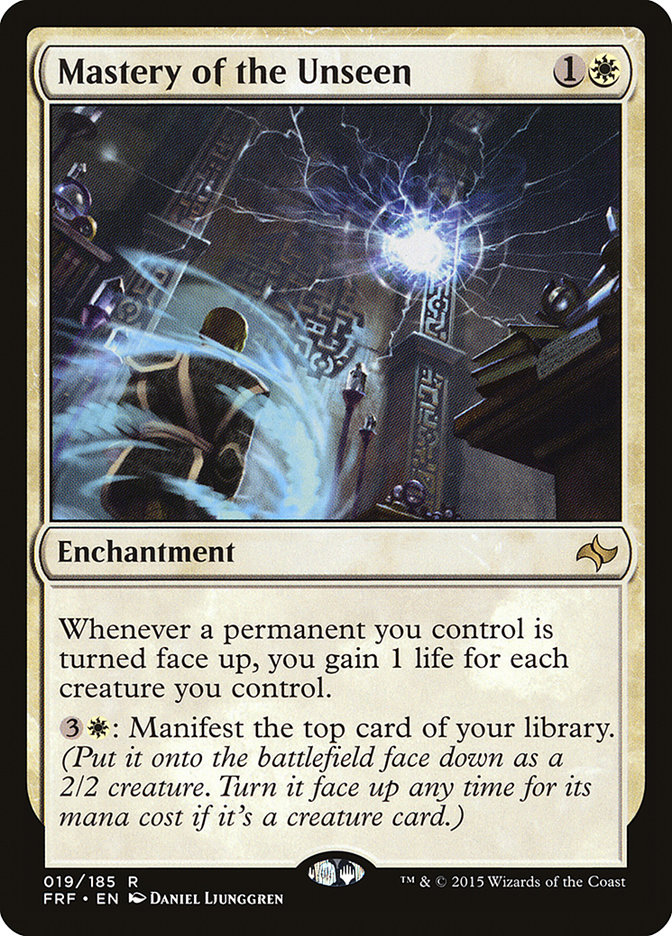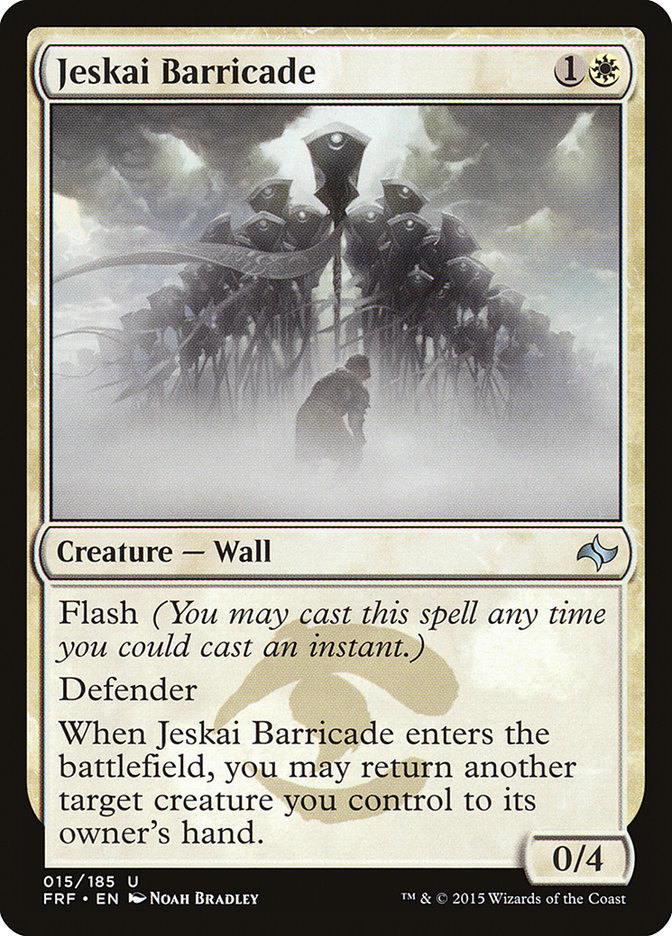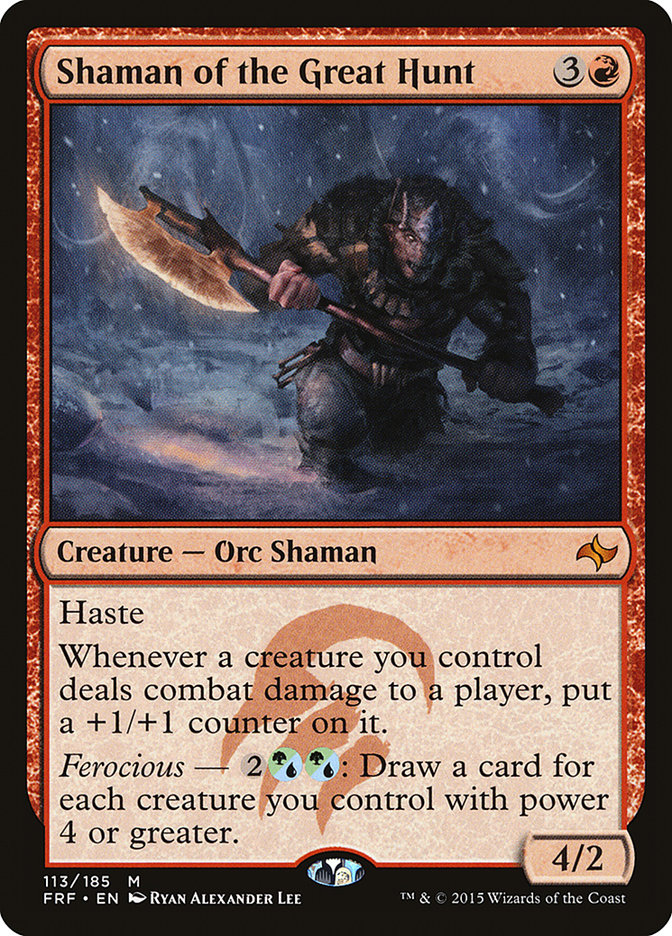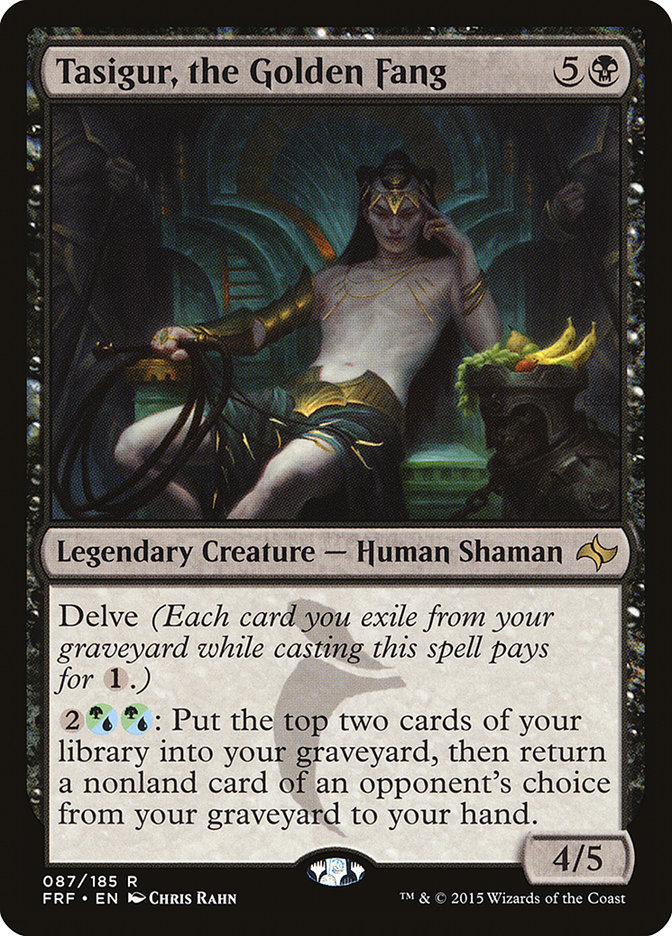Last week
, I wrote about the cards spoiled that at the time that I felt would have an impact on Constructed. This week I’ll be doing the same, talking about some
standout cards that have been spoiled in the past week that I feel have a chance of breaking into 60-card formats. Without seeing the entire set as a
whole, it’s tough to properly analyze the strength of the cards for Limited. With that said, it’s easier to see how Constructed will incorporate new cards
into existing strategies. While it’s possible for entirely new decks to develop, most of the time it’s the established archetypes that gain boosts, and it
takes a few weeks for something brand new to break through.
I can see Neutralizing Blast making its way into sideboards as a counterspell that competes with Disdainful Stroke as a reasonable answer to Siege Rhino
and/or Sidisi, Brood Tyrant while also having a reasonable number of other targets. Abzan Aggro is currently the deck that has the most multicolored spells
in it, and even typical Abzan Midrange has a healthy enough number to where you would always be happy to have a copy of Neutralizing Blast in your hand
against them.
There haven’t been many gold cards spoiled yet outside of the cycle of rare dragons. Most of the “gold” cards are single-colored with activated abilities
from other colors like Soulfire Grand Master, so Neutralizing Blast may not end up being as good once the format fleshes out. I imagine a world where
Neutralizing Blast will be a great sideboard card against much of the current field then people will start deckbuilding with their multi-colored spell
count in mind and Neutralizing Blast will become less efficient.
As much as this looks like a boost to Mono-Red, I think the existence of Wild Slash will further push its viability out. Currently, I don’t mind a Boss
Sligh build with four copies of Searing Blood, as it’s a card that hasn’t seen much play, and decks aren’t building with it in mind. Likewise, W/U Heroic
will take a significant hit, as even Favored Hoplite is no longer safe on the play. Magma Spray exists in sideboards to some extent, and there are still
some Magma Jets going around, but in general, two-damage effects are currently in low numbers. Drown in Sorrow appearing in high numbers in the sideboards
of the Sultai and Abzan decks also pushes out small creature strategies.
Wild Slash is a good maindeck card, especially with the printings of so many good prowess creatures, highlighted by Soulfire Grand Master and Monastery
Mentor. Trying to consistently turn on ferocious for Wild Slash is a mistake, and this should be largely treated as plain ol’ Shock. With such strong
upgrades to R/W Aggro, I see that as a very obvious week 1 deck that will be both good and heavily played, and that will likely be a high tier mainstay up
until the release of Dragons of Tarkir. Current Standard is very creature-oriented, and once one of the best strategies has enough efficient cheap removal,
I can see a resurgence of pure control decks.
The new Hellrider? Not quite, and although they’re rather comparable, they serve very different functions. Brutal Hordechief comes at a time when tokens
are highly played and all of the good planeswalkers create creatures or turn lands into creatures. Hellrider was at a time without those planewalkers and
with an ability that dealt normal, redirectable damage as opposed to loss of life. Brutal Hordechief will be a nice role player alongside tokens, but the
question remains how well it will compete with other competing four-drops like Butcher of the Horde and Sorin, Solemn Visitor. I expect Brutal Hordechief
to appear in two-color decks, be it B/W or B/R, a deck that uses Brutal Hordechief to complement a small creature theme and doesn’t have too many competing
four-drops.
Of course, there’s the Master Warcraft ability too. Two of the top decks right now are Abzan Reanimator and Sultai Reanimator. Both decks are great at
flooding the board with blockers. With Brutal Hordechief, you basically put all of their blockers on one of your tokens, leaving the rest ready to connect.
Against a Whip of Erebos, you can remove that one token with either a removal spell like Murderous Cut, or with a sacrifice from Butcher of the Horde to
prevent your opponent from gaining life after blockers. Although Brutal Hordechief looks like a mere 3/3 for 3B, I expect it to make a big impact.
What made Figure of Destiny better than Student of Warfare was that it went into multiple decks. What also held Student of Warfare back was that you had to
commit to leveling it up at sorcery speed. The power of Warden of the First Tree lies in that it goes in two or three separate decks and that you’re
allowed to “level it up” at any time. This allows you to leave up mana for something like Hero’s Downfall, Utter End, Abzan Charm, or perhaps even Valorous
Stance just in case, then have the option to reach the next level if you so choose.
The natural comparison of Flamewake Phoenix is to Chandra’s Phoenix, but I think the two cards will play drastically differently. First off, Chandra’s
Phoenix did a good job of blocking in burn decks, which is something Flamewake Phoenix can’t do. What the new phoenix can do is apply very quick pressure
alongside something like Savage Knuckleblade in Temur Monsters. The Mono-Red cards are pretty good at enabling it as well, with something as simple as
Firedrinker Satyr or Foundry Street Denizen + Hordeling Outburst. Firewake Phoenix is a fine card on its own in the deck so getting some occasional value
is always welcome. Chandra’s Phoenix was so-so when you had to blow a Shock at the opponent’s face to Raise Dead your creature. In the right build you
ought to be able to rebuy Firewake Phoenix without skipping a beat.
The new “hydra,” Wildcall isn’t quite as powerful as Genesis Hydra but has much more versatility, as you can cast it anywhere on curve, as early as turn 2.
The green manifest cards are the best since you get Courser of Kruphix naturally in the deck to help pinpoint the good creature you want to make a
temporary 2/2 with permanent bonus counters. It also works well to change the top card of your deck, so Courser of Kruphix is more likely to gain you a
free land. Genesis Hydra was the top-end for many Green Devotion strategies, but has now been somewhat replaced by Hornet Queen. The hydra’s problem was
that it was only good in the lategame, and you tended to draw opening hands that didn’t function well early. I expect Wildcall to be a four-of in decks
willing to play it.
I think this card is really good. It’s fine in a dedicated control deck that uses this as a win condition, but it really shines in a deck that
takes advantage of the knowledge of its top card, like with Courser of Kruphix, to really sculpt the texture of your draws. The lifegain aspect of Mastery
of the Unseen is a freebie and definitely nice, similar to Courser of Kruphix, and while you never expect to gain tons from it, the number of games
determined by a few points here and there will be surprising.
I see the greatest similarity of Mastery of the Unseen to Luminarch Ascension. It’s a two-drop that you sit on behind a wall of countermagic and eventually
win with. It may be too mana-intensive to really break through to competitive Constructed, but I’m willing to keep an eye out on this one. Instead of a
pile of 1/1 soldier tokens from Elspeth, Sun’s Champion we may see an era filled with colorless 2/2s finishing off helpless opponents.
Of the cards spoiled so far that I think are good, this has to be the most subtle. Jeskai Barrier has similarities to Wall of Omens and Whitemane Lion. The
latter never really saw play, but that’s mainly because the body didn’t do much and the format wasn’t so heavily creature and removal oriented. An 0/4 is
good enough to block many things, and it’s nice to be able to cast it at the end of an opponent’s turn or during their combat step as necessary. The
utility is there, although finding the perfect spot where you want a blocker as well as wanting to save a strong creature versus removal will be narrow.
Jeskai Barricade is the kind of sideboard card that when it’s played, it will be the best card that could be played in a given situation. When combined
with manifest to turn your 2/2s into the spells or lands that you need, this innocuous wall suddenly turns into some real advantage.
When Goblin Rabblemaster was first printed, its full potential couldn’t really be seen by reading it on the spoiler. It looked like any other Gray Ogre
with a minor upgrade that wouldn’t ever make it to the big time. There are too many good abilities attached to Shaman of the Great Hunt for any of us to
properly evaluate at first glance, and I bet he’ll really exceed expectations. The one thing perhaps holding him back is that Shock is coming back in a big
way in the form of Wild Slash, so there is a risk of being caught in a mana deficiency.
Shaman of the Great Hunt is a 4/2 haster which is great. It also draws cards when it survives and looks to get out of control very quickly. It grows itself
and the rest of your creatures when they hit. But there is a small aspect that I think goes overlooked when people initially rank the power of Shaman of
the Great Hunt. While he’s awesome when he lives, as Goblin Rabblemaster is, the Shaman really enables some good attacks. You’ll get the trigger to add a
+1/+1 counter to each connecting creature regardless of if Shaman of the Great Hunt lives through the combat or not. That means if you have a few small
creatures and they have a Courser of Kruphix, it’s okay to offer the trade or the possibility of throwing away a 2/2 of some sort because the value you get
from any outcome is so high. Attacking is so great with this guy that I like its usefulness in most aggressive situations, which hopefully outweighs how
abysmal it is at blocking.
Now then. Let’s talk about Reality Shift.
It’s kinda like Path to Exile. Kinda like Swan Song. I do see Reality Shift being Constructed playable, although it depends on how important big creatures
are. Currently, many of the creatures either have value when they come into play, like Siege Rhino or Sidisi, or are too small for replacing it with a 2/2
to be worth it. If there are a bunch of Soul of Theros being hardcast, then maybe Reality Shift can be a thing. The difference between this, Path to Exile,
and Swan Song is that although it’s “negative card advantage,” you’re optimally replacing a resource that they want for a resource that they don’t want.
When you’re replacing their creature with a smaller creature, they are much less interrupted.
Of the cycle of rare Khans out of Fate Reforged, Tasigur, the Golden Fang is the only one that strikes me as Constructed-worthy. Basically, the rest of the
cycle are a bunch of generic “good creatures” that have a fixed casting costs and cute, but rather situational abilities. Necropolis Fiend cost three more
than this and saw a touch of play before it was deemed not strong enough. The problem with Necropolis Fiend is that after delving to cast it, you’re left
without much of a graveyard to use with it. Tasigur works favorably with delve as you’re able to remove the cards from your graveyard that you don’t want
your opponent to give you. With a little effort I can see Tasigur making a very good Tarmogoyf impression while having “draw a non-land card” for four mana
attached for free. Oh, and like SIdisi, Brood Tyrant, it gives value while filling your graveyard! Sylvan Caryatid and a second copy of Tasigur will be
some of weaker gives from his activated ability, and those times will, of course, be underwhelming, but I like the upsides of Tasigur enough to deal with
an occasional blank.
A little over half of Fate Reforged has been spoiled thus far, and typically, the last bunch of common and uncommons get much less attention than the
rares. The flashy rares aren’t always what a set is about, as we see Treasure Cruise and Monastery Swiftspear making the biggest impact in older formats
from Khans of Tarkir. The mythics from Fate Reforged are very powerful for Standard, but I don’t see much thus far reaching into Modern or Legacy outside
of some broken combo creature deck with Soulflayer that does the same degenerate things as Necrotic Ooze. There’s a lot left to go, and the best cards are
often the overlooked commons.
This spoiler season is long from over.


